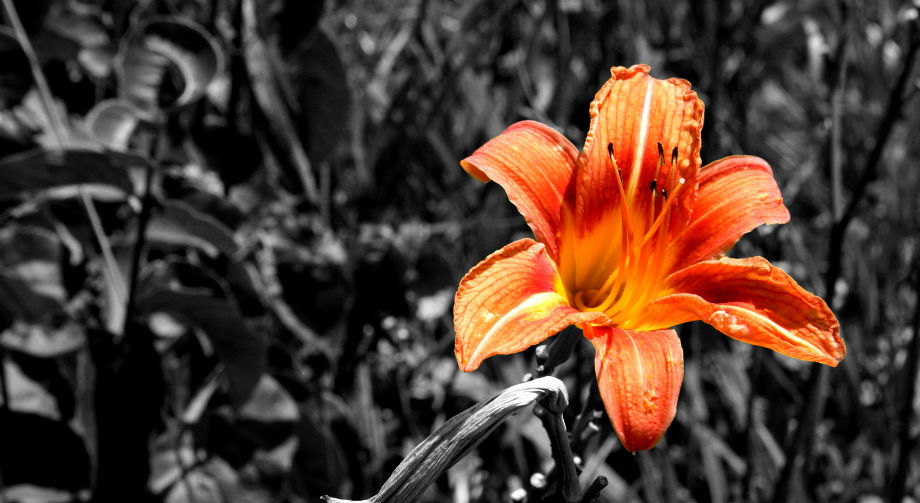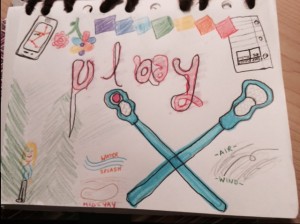As we ventured outside this week to explore some environmental education games, I felt excited to spend more time outdoors. As a class we partook in a variety of activities, all of which, provided a different view of what it means to teach environmental education. As we played and explored in the activities, I was drawn to the fact that environmental education is not a subject on its own; in fact, it could be integrated into many other curricular classes. As each group chose a different age group to teach, we were able to see how you could modify activities to encourage all students to explore and find their connection to nature.
Below you will find two pictures of my creative journal entry. I decided to attempt an ambigram (two words in one – in this case it spells play upright, but upside down it spells learn) as I believed it showed how these activities outdoors gave us an opportunity to explore nature as well as we were actively learning during this process too.
I was particularly intrigued by the connection made to the game of Lacrosse and how it not only promotes being outside, but also incorporates treaty education. This interconnection between physical, environmental and treaty education shows that if we as teachers put our minds to it, we do no have to segregate our learning into “disciplines.” This reminds me of the article we read in class called “The Problem of Disciplines” by David Orr and how if we divide our learning that we cause a disconnection and therefore lose the full picture of why we are learning. This reminds me of the way many students ask, “why are we learning this?” I think that, like David Orr, we forget the importance of learning as we just focus on achieving excellence in each particular “subject”. In my future classroom, I hope to use inquiry lessons to allow my students to explore the full picture and to help them gain a better understanding of the connection between different parts of our knowledge base.
The idea of cross-curricular teachings brought me to reflect on the presentation Morgan Bayta did in our classroom. Morgan’s dedication to incorporating environmental education into her everyday classroom experience was very inspiring. As she talked about her Little Green Thumbs interaction in her classroom with her students, I could help but desire to grow plants in my future classroom. It was encouraging to me that you do not need to have an extensive gardening background in order to have a successful garden in your classroom. I was thrilled to know that there are grants and opportunities for teachers to being nature into their classroom. As far as teaching, I think that it is cool that Morgan is able to connect a lot of her teaching to their classroom garden as it has become a passion of her students and they are very proud of it. I think that this gives a great opportunity for students to find their connection to the world around them and push to respect it.
This week, I completed a second journal entry because I was so inspired by Morgan’s presentation. The photo listed below shows how you only need one seed to start a garden. In the case of Morgan Bayta’s grade one class, that one seed was a physical seed. In my case that one seed was the story told by Morgan Bayta. She has inspired me to want to grow plants in my future classroom. This is the start to a journey of contemplation as I work to face all of my challenges before I am able to start a garden of my own, both at home and with my future students.
Thank you Morgan for your inspiration. Your commitment to environmental education and your students is moving.
Until next time!





I was also very moved by Morgan’s presentation! I believe bringing such things into the classroom can give children many opportunities and therefore, I also want to try something like this within my own classroom (I may not be quite as successful, but I will try!). I too believe that allowing children to explore will benefit their learning. Thank you for sharing!
LikeLike
Hi Jenna! I’m so happy our chat a few weeks ago has you feeling inspired! You definitely don’t need to know a lot about gardening to get started with your students. That’s part of the fun – learning alongside them. It’s kind of awesome actually when kids get to see you try something that you’re not sure will work out…my kids love teasing me “Ohhhhhh Ms. Bayda” when I make mistakes…I feel like it makes me a little more real to them, and I love to laugh at myself too! It’s awesome to hear you’re reading some David Orr. I feel really inspired by some of his work!
Morgan
LikeLike